Bury me in the tram ...
In many countries, people in their daily life prefer not to think about death: the theme forces us to dive into the thoughts and sad, remembering the departed. But in Austria, people refer to the death of another, calling it "the last celebration of life": they can for many years to save for a big funeral in advance to buy a place in the cemetery, go there for a walk, to visit relatives of the deceased. On the Viennese cemetery where many famous Austrians, today lead tours. Moreover, for several decades, there is the Museum of the funeral (Bestattungsmuseum), who also became a favorite tourist destination in Vienna.
Before you get the highest status of a cultural institution, Bestattungsmuseum was normal funeral company. In 1967, 16 years after its founding, the bureau turned into a museum, and in 1987 he curated the Wittig Keller has created a new design Bestattungsmuseum, which we see today.
It collected more than 1,000 unique exhibits telling about the funeral rites of the Austrians and the history of special, "Vienna" view of death.
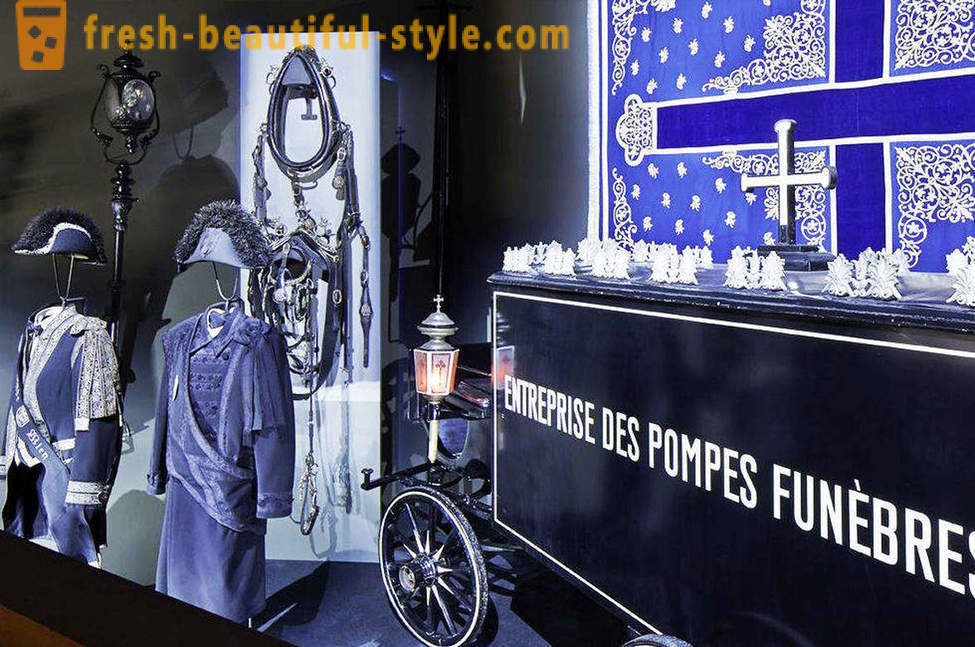
A reusable coffin
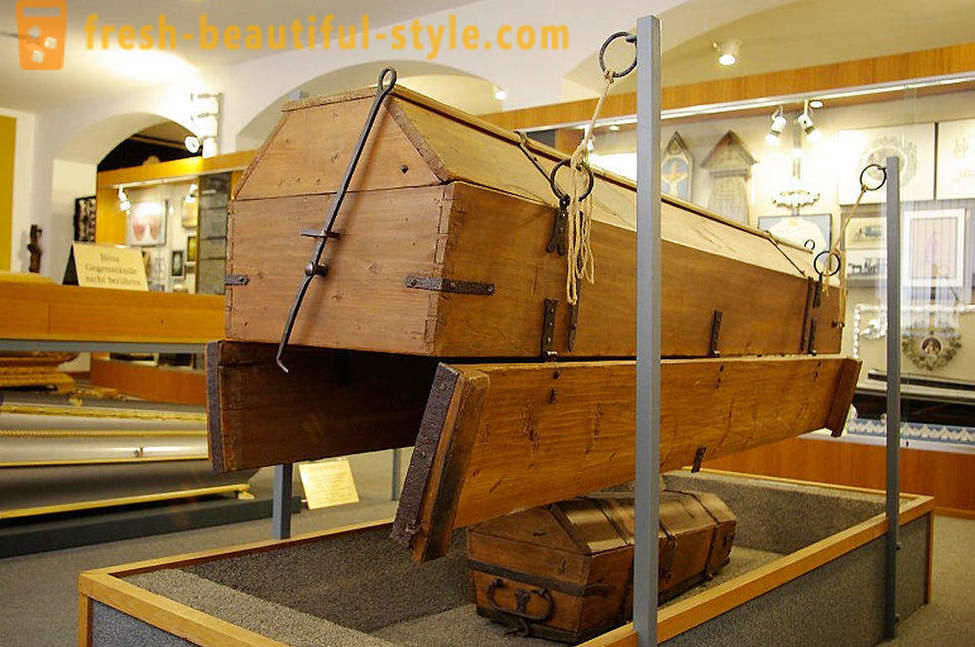
The Austrians have always been people of wide soul. Up to the fact that in 1784 the Emperor Joseph II of, dissatisfied with excessive extravagance of the Viennese and their ability to spend on the funeral rites of the huge sums ordered to start manufacturing reusable coffins. According to the Emperor's opinion, without a coffin body would decompose quickly.
invention secret was in the hinged bottom portion. During the funeral, the coffin did not fall into the ground and hung over the grave, its lower part is opened and the deceased left this very vale of sorrow. Emperor idea led to general discontent and even unrest because reusable coffins were soon canceled. And in 1825 it issued a decree that everyone who died at the burial should be in individual coffin.
for buried alive alarm

Fainting, lethargy, incompetence of the doctor - they all did in the recent past, a very real situation where the person is buried alive. Thought about this possibility turns into a nightmare the lives of people impressionable and nervous. Russian writer Nikolai Gogol, incredibly afraid of such an outcome, in his notes to bury him punished only when the body will be clear signs of decomposition.
In Vienna, as in order to avoid terrible accidents began to use "alarm". The apparatus consisted of a cord attached to the bell. The cord is embedded in the dead man's hand, which in the case of being buried alive, he could pull the cord to cemetery caretaker heard the sound and saved him from the death of this already. The museum the whole collection of different rescue mechanisms with bells and calls.
A sedentary coffin

Sitting on the couch coffin shocking anyone. History exhibit unusual. In fact, oddly shaped coffin appeared for the first time in 1951 in the picture the famous Belgian surrealist artist Rene Magritte. The author based his portrait of a Parisian socialite Madame Recamier brush Jacques-Louis David, written back in 1800. Magritte was replaced by a woman sitting on a couch wooden coffin, while leaving gracefully falling down on the floor of her dress and cape. The canvas called "The prospect of Madame Recamier." The physical embodiment of the painting was created at the Vienna Museum of the funeral and is one of his most famous pieces.
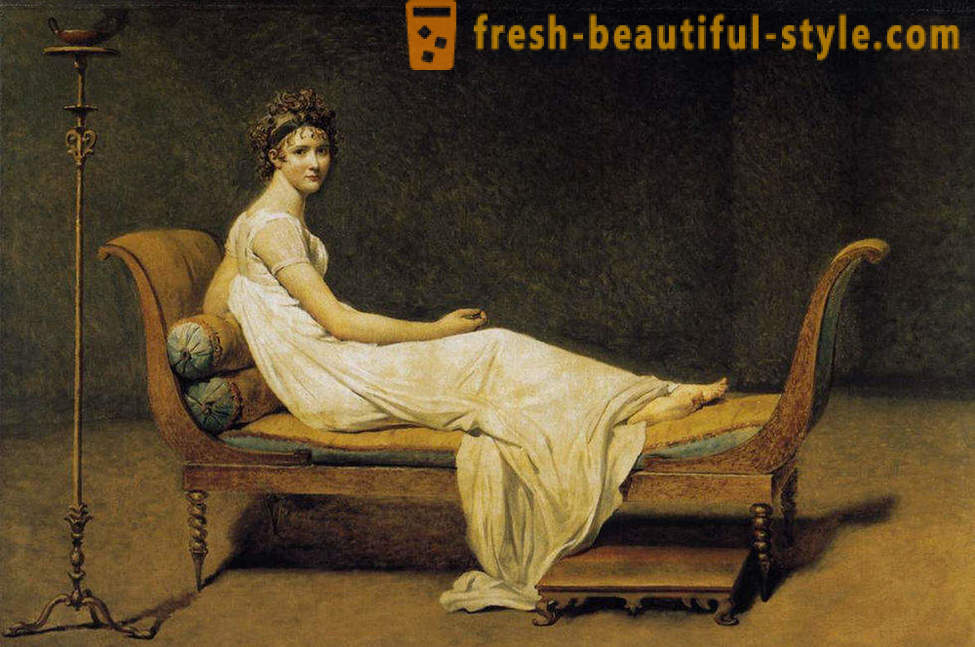
It should be noted that these works of Magritte wrote several parodied including Manet painting "Balcony". These works - a kind of mockery perpetuation of mortals. Hiding in a coffin hero of the picture, as if the artist were aged kills and puts into oblivion these "eternal people" with paintings, which are not changed for hundreds of years.
Coffin cocoon
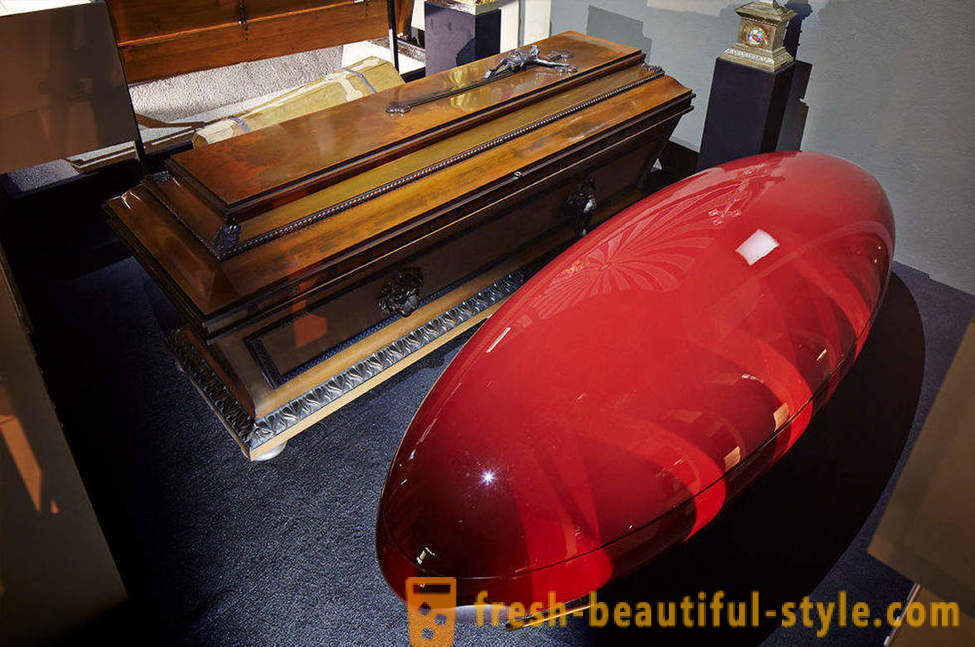
Another exhibit of the museum, which can also be purchased for himself - a coffin-shaped cocoon. Its creator was the German design house UONO. Manufacturers believe that the unusual shape of the grave inspire the customer peace of mind, a sense of safety and security. "Cocoon" is made of jute and covered with enamel, water-based. Manufacturers claim that these materials decompose in the earth an average of 10-15 years without harming the environment. Perhaps the only disadvantage of this device haute couture - the price: € 3000.
The knife to cut the heart
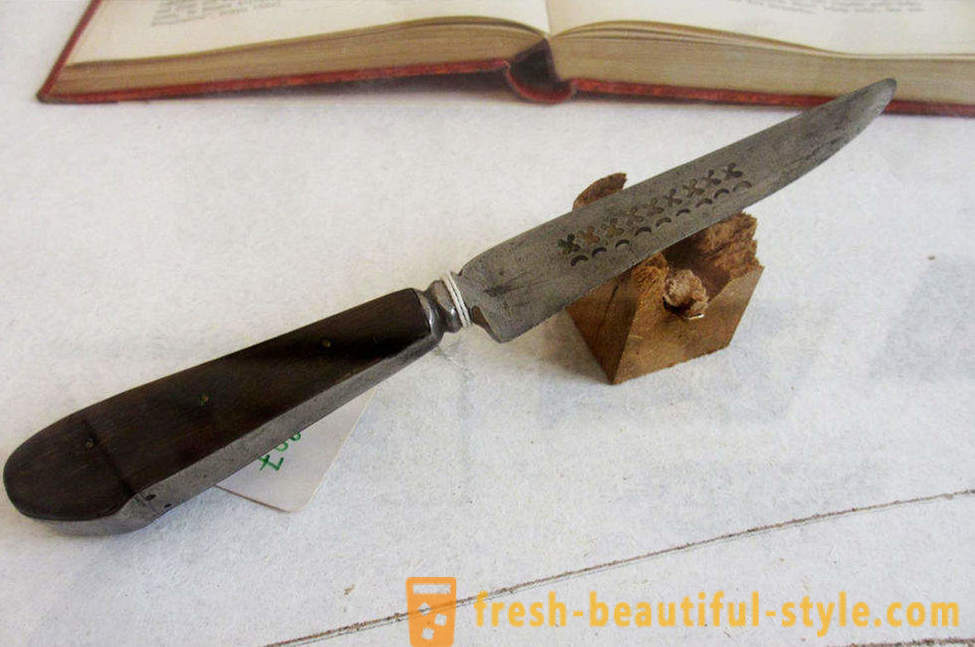
In the beginning of the XX century, this instrument more like a sharp blade with a handle ordinary kitchen knife, was in the arsenal of every pathologist. Indeed, in Austria and in other countries as well (for example, in England, France or Scotland) since the Middle Ages there was a tradition of burial of the heart separate from the rest of the body. This mysterious ritual, as well as alarm with a bell, relieves people from the fear of being buried alive. Typically, in such a way and buried nobles - you will be surprised - buried so far. Thus, in 2011, was buried last prince of the Habsburg dynasty: his heart traditionally been buried in one of the Hungarian monasteries.
a public funeral tram
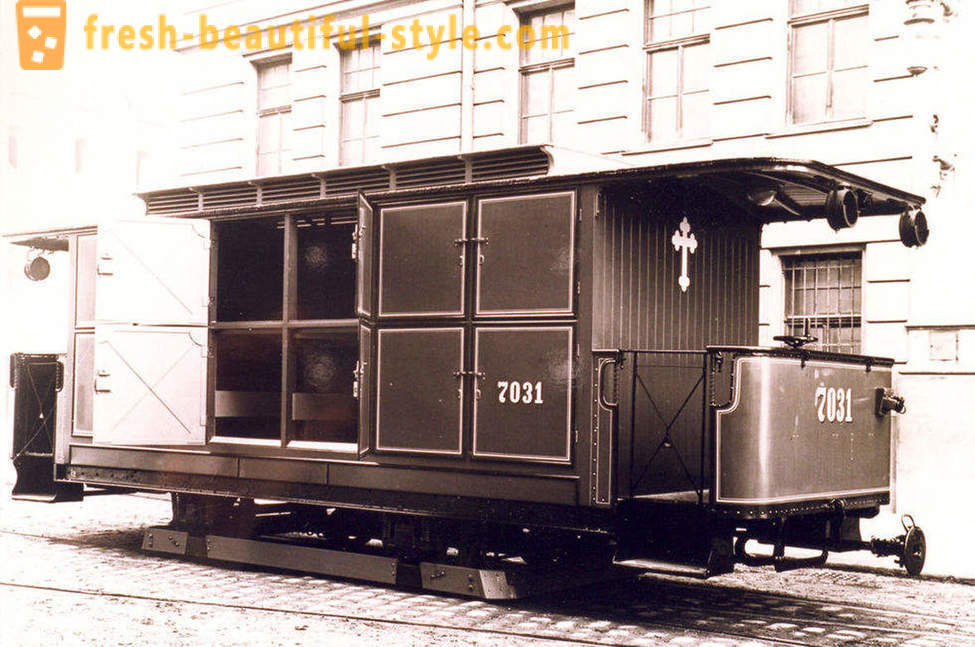
Those crowns, which knife to the heart not the light, in the XIX-XX centuries accompanied their loved ones in the last journey by tram. This way of moving has been in other countries: trams, hearses existed in America, Spain and even Russia. For a modest fee tram delivered dead to the cemetery on the rails.
The idea of a funeral tram was born in Vienna as early as the 1880s, but has been implemented during the First World War (and having lived up to the second). tram route passed by hospitals, nursing homes and the Central Cemetery in Vienna. In one car at a time could fit 12 coffins, each of which is housed in a special compartment. If necessary, the tram was used not only for the transport of the dead: it also brought the wounded to the hospital. Total Vienna plied three of these black mourning tram. The fare was 40 Reichsmark (about 21 € 8 at current exchange rates). In the 1960s, Viennese funeral trams were decommissioned and became museum pieces.
Motley shroud
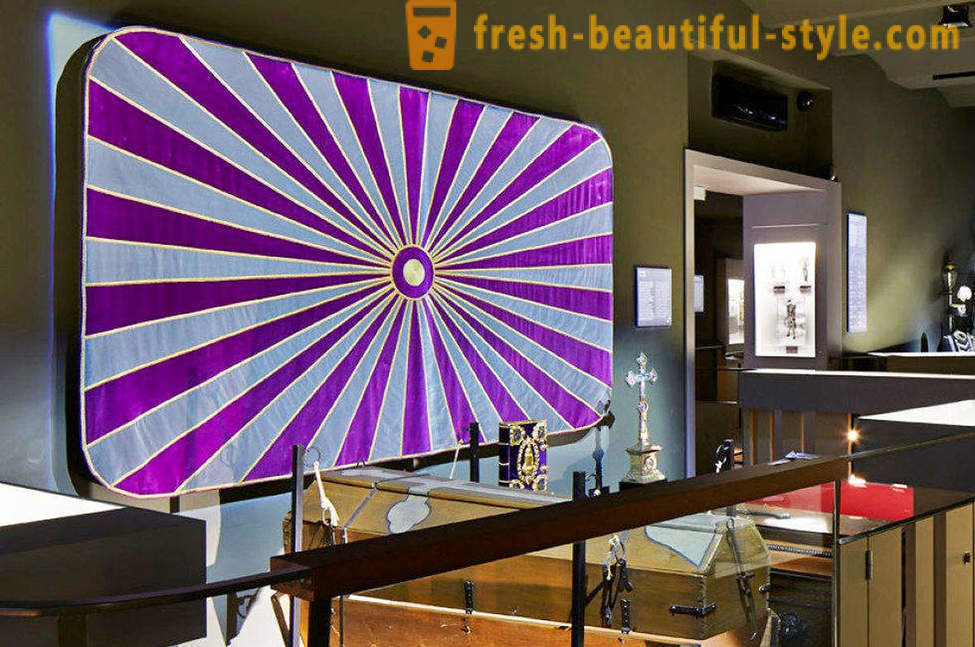
It would seem that the leading color during the funeral is usually dark or just a gloomy black. However, the Austrian architect Erich Boltenshtern in the XX century, decided to create a funeral shroud (shroud), traditional to the late Middle Ages and the Renaissance. The fact is that before the end of the XVII century in the funeral rites of black color, familiar to us now, almost not used. For example, people carrying a coffin, dressed in a wine-colored capes or even fuchsia and the same color hats. In the Middle Ages in the burial rites, as now, the shroud was used, which is also distinguished by its brightness. Of course, brightly colored fabrics generally can afford only wealthy people.
The shroud, which is depicted in the photograph, created from velvet and colored in bright purple color, and in its center - a circle with radiating from it in all directions rays. It is a symbol of the sun that illuminates the dark road of man to the light. Its beams are decorated with gold threads.
King's funeral crown (wreath)
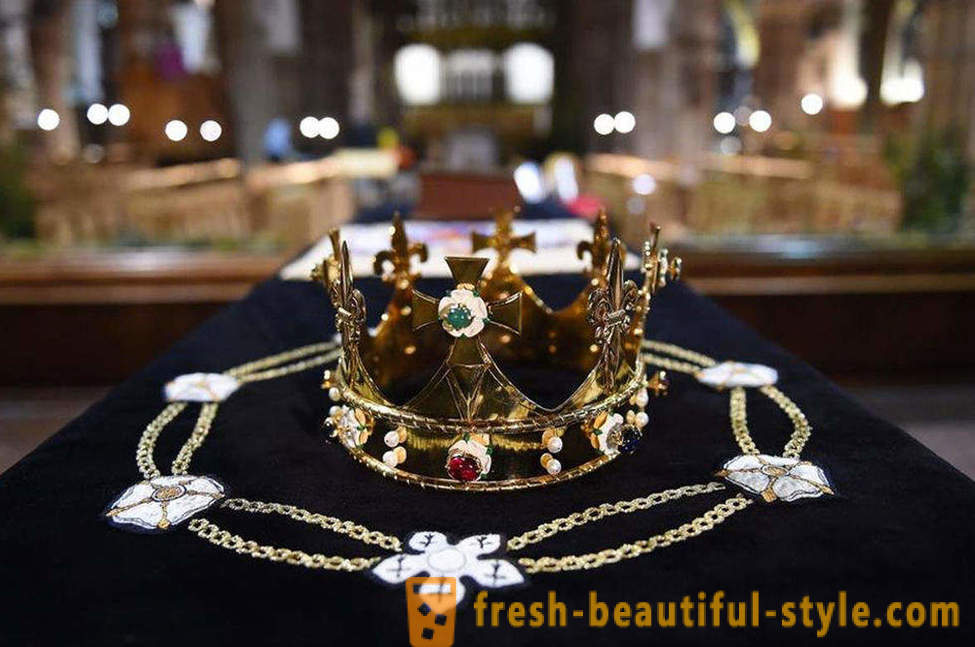
In the Austrian tradition of the deceased monarch, Duke, Duke, or nobles were buried in specially made for him the crown (or wreath). Often mourning accessory ships with a king or emperor on his last journey, it was a replica of the crown, which the governor wore in life. In the manufacture of crowns often used gold, copper, lead, brass, as well as precious and semi-precious stones and pearls for decoration. Integral parts wreath or crown teeth were: what were more, the more noble presumed dead. For example, the Baron there could be seven, and the count - nine. These funerary crowns and crowns worn on the heads of the dead since the Middle Ages. The grave also put other items that speak of a noble origin of man. It was believed that in this way, when the Last Judgment comes, the noble status of the deceased will be immediately noticed and appreciated. But this crown was needed not only in the event of the Day of Judgment: first of all it is meant that, although the man was already dead, only ends his earthly power, and that the memory of his people he will always be the ruler.
The urn for ashes in the form of a soccer ball
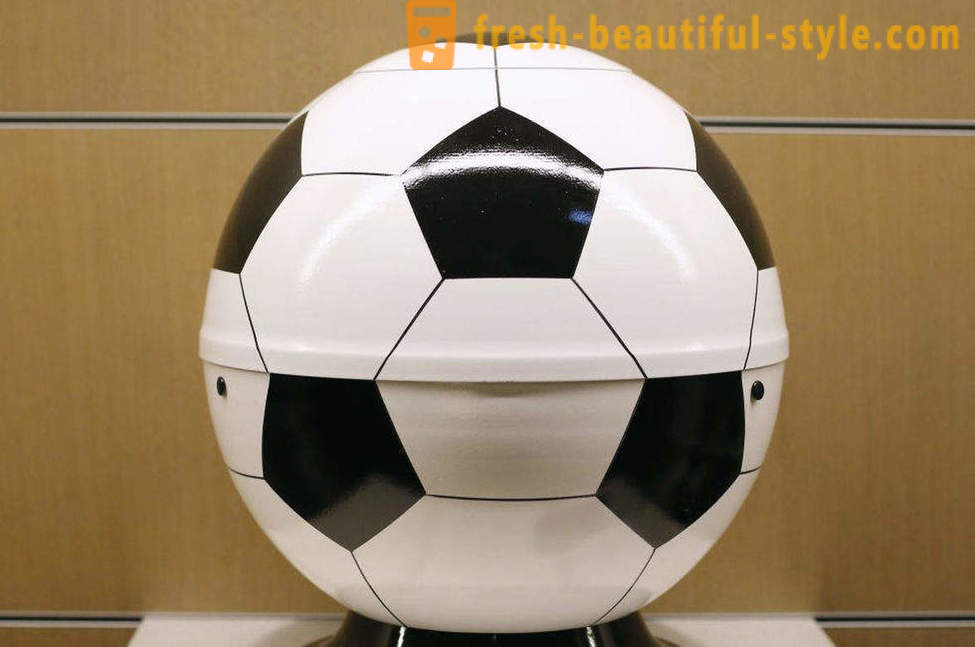
In addition to many unusual coffins in the museum there is a collection of urns for the ashes. The most unusual - in the form of a soccer ball - presented in an assortment of different colors, depending on whether, for any club suffered the deceased. Bestattungsmuseum released the series in 2008 during the European Football Championship. It was designed for those who are not fortunate to leave this world just in time for the event. I must say, football urn for cremation made a real buzz and is popular even now, however, let it can not every citizen of Austria: the price of the last refuge - about € 360. According to statistics, Vienna cremation selects every third
"Dead Man's Chest" Baroque

Painted Baroque coffin - another value Viennese funeral museum. Scientists do not know who owned the artifact, more like a work of art, rather than on the box for the burial. It was made around the middle of the XVIII century. Figures on the wooden surface of the imagination: tulips cover the entire length, a great image of Jesus Christ, and the bottom - a skull wreathed with laurel crown, crossbones, all kinds of patterns. Since 1975 the coffin - an important part of the museum; because of its unusual design, he received a fabulous name "Dead Man's Chest." Amazingly, he survived well, so long lain in the ground. However, some of the restoration due to moisture and termites, it is still needed.













































